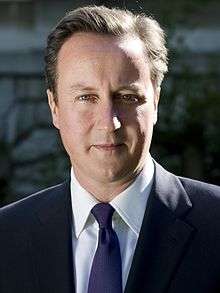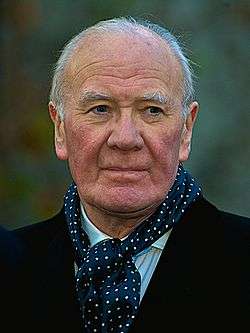United Kingdom local elections, 2007
| | |||||||||||||||||||||||||||||||||||||||||||||||||||||||
| |||||||||||||||||||||||||||||||||||||||||||||||||||||||
| |||||||||||||||||||||||||||||||||||||||||||||||||||||||
|
| |||||||||||||||||||||||||||||||||||||||||||||||||||||||
| Colours denote the winning party, as shown in the main table of results. | |||||||||||||||||||||||||||||||||||||||||||||||||||||||

The 2007 UK local government elections were held on 3 May 2007. These elections took place in most of England and all of Scotland. There were no local government elections in Wales though the Welsh Assembly had a general election on the same day. There were no local government elections in Northern Ireland. Just over half of English councils and almost all the Scottish councils began the counts on Friday, rather than Thursday night, because of more complex arrangements regarding postal votes.
These elections were a landmark in the United Kingdom as it was the first time that 18- to 20-year-olds could stand as candidates for council seats. The change was due to an alteration of the Electoral Administration Act. At least fourteen 18- to 20-year-olds are known to have stood as candidates for council seats[1] and as a result William Lloyd became the youngest person to be elected to official office in Britain. There were also a number of councils which used new voting methods such as internet and telephone voting in addition to the traditional methods of polling stations and postal votes.
These were the final elections to be overseen by Labour leader and prime minister Tony Blair, who resigned the following month after a decade as prime minister to be succeeded by chancellor Gordon Brown. His party only finished in second place with a narrow lead over the third-placed Liberal Democrats, whose leader Menzies Campbell would also resign later in the year, while it was a strong showing for the Conservatives under David Cameron. The results confirmed that the Conservatives were well on their way to winning the next general election, making a very substantial 911 gains, the largest gains made by the party in over 20 years, although there was still the challenge of winning parliamentary by-elections and ultimately winning enough seats in the next general election to be considered.
Summary of results in England
There was a suggestion in February 2006 that many of the 2007 local elections in England would be cancelled due to a reform of local government.[2] However, since then possible reforms are still in the consultation stage and no decisions have yet been made.
312 English district councils, nearly all districts in England held some form of election – either thirds or full – on Thursday, 3 May 2007.
The final results are summarised below; firstly, with a table ranked by the party with the greatest number of councillors elected.
| Party | Councils | Councillors | |||||||
|---|---|---|---|---|---|---|---|---|---|
| Gain | Loss | Change | Total | Gain | Loss | Change | Total | ||
| Conservative | 47 | 8 | +39 | 165 | +911 | 5315 | |||
| Liberal Democrat | 5 | 9 | -4 | 23 | -246 | 2171 | |||
| Labour | 3 | 10 | -8 | 34 | −504 | 1877 | |||
| Residents | 0 | 0 | 0 | 1 | -19 | 67 | |||
| Green | 0 | 0 | 0 | 0 | +17 | 62 | |||
| BNP | 0 | 0 | 0 | 0 | +1 | 10 | |||
| Liberal | 0 | 0 | 0 | 0 | -1 | 9 | |||
| Mebyon Kernow | 0 | 0 | 0 | 0 | 2 | 1 | +1 | 7 | |
| UKIP | 0 | 0 | 0 | 0 | -1 | 5 | |||
| Health Concern | 0 | 0 | 0 | 0 | 2 | 1 | +1 | 4 | |
| Respect | 0 | 0 | 0 | 0 | 2 | 2 | 0 | 3 | |
| Socialist Alternative | 0 | 0 | 0 | 0 | 0 | 1 | -1 | 0 | |
| Other | 0 | 4 | -162 | 949 | |||||
| No overall control | -27 | 85 | – | – | – | – | |||
England
Metropolitan boroughs
All 36 English Metropolitan borough councils had one third of their seats up for election.
Unitary authorities
Whole council
In 25 English unitary authorities the whole council was up for election.
Third of council
In 20 English unitary authorities one third of the council was up for election.
District councils
Whole council
In 153 English district authorities the whole council was up for election.
Third of council
In 78 English district authorities one third of the council was up for election.
Mayoral elections
| Council | Independent | Conservative | Labour | Liberal Democrat | Green | Elected | Result |
|---|---|---|---|---|---|---|---|
| Bedford | 15,967 | 10,710 | 4,757 | 10,551 | 1,538 | Frank Branston | Independent hold |
| Mansfield | 13,756 | 2,770 | 8,774 | 1,944 | 1,489 | Tony Egginton | Independent hold |
| Middlesbrough | 17,455 | 1,733 | 3,539 | 7,026 | no candidate | Ray Mallon | Independent hold |
Scotland
All 32 Scottish councils had all their seats up for election - all Scottish councils are unitary authorities. These local elections were held on the same day as the Scottish Parliament general election. They were the first election for local government in mainland Great Britain to use the Single Transferable Vote (the system is used in Northern Ireland), as implemented by the Local Governance (Scotland) Act 2004.[3]
Summary of results
| Party | Councils - majority | Councils - in coalition/minority | Councillors | |
| SNP | 0 | 11 | 363 | |
| Labour | 2 | 11 | 348 | |
| Liberal Democrats | 0 | 12 | 166 | |
| Conservative | 0 | 8 | 143 | |
| Scottish Green | 0 | 0 | 8 | |
| Scottish Socialist Party | 0 | 0 | 1 | |
| Solidarity | 0 | 0 | 1 | |
| Other | 3 | 9 | 193 | |
| No overall control | 27 | - | - | |
Councils
The notional results in the following table are based on a document that John Curtice and Stephen Herbert (Professors at the University of Strathclyde) produced on 3 June 2005, calculating the effect of the introduction of the Single Transferable Vote on the 2003 Scottish Local Elections.[4]
Pre-election predictions
A Newsnight poll by the analysts Rallings and Thrasher some days before the election predicted the following results for the English council elections:
Con 38% (Conservatives gaining 330 seats and losing 2% of the vote on 2006)
Lab 24% (Labour losing 500 seats and losing 2% of the vote on 2006)
LD 29% (Liberal Democrats gaining 110 seats and gaing 2% of the vote on 2006)
However, these predictions, as in 2006, were largely inaccurate, underestimating Conservative support and grossly overestimating the Lib Dems' performance. However, it did accurately predict the number of seats Labour would lose.
Notes and references
- ↑ http://news.bbc.co.uk/1/hi/uk_politics/6527015.stm
- ↑ BBC NEWS | Politics | Council polls could be scrapped
- ↑ Elections to the Scottish Parliament and the National Assembly for Wales
- ↑ "Archived copy" (PDF). Archived from the original (PDF) on 11 September 2008. Retrieved 6 February 2016.
- ↑ Labour minority control. The council was previously run by a coalition of Scottish Liberal Democrats, Independents and the SNP.
- ↑ Liberal Democrats lack a majority (LD: 12 councillors; opposition: 12 councillors)
- ↑ Labour lack a majority, after by election loss to Scottish National Party (Lab: 29 councillors; opposition: 29 councillors)
- ↑ Labour minority administration
- ↑ Conservative and Unionist control, on a cut of the cards (Con: 15 councillors; opposition: 15 councillors)
- ↑ Labour lack a majority, after by election loss to Scottish National Party (Lab: 11 councillors; opposition: 11 councillors)
External links
- Results table (BBC News)
- Overview of councils up for election
- CityMayors article
- Young candidates article



